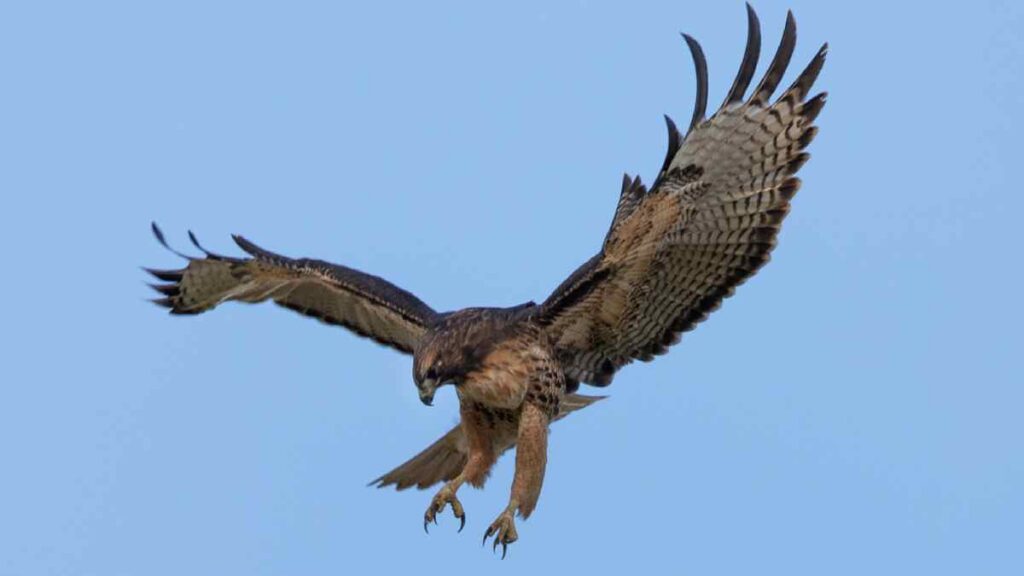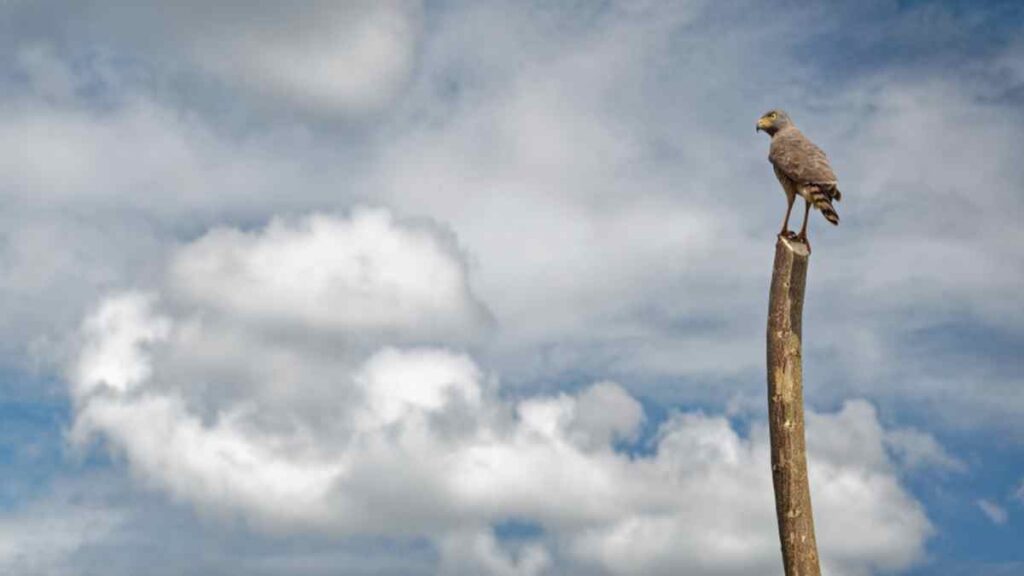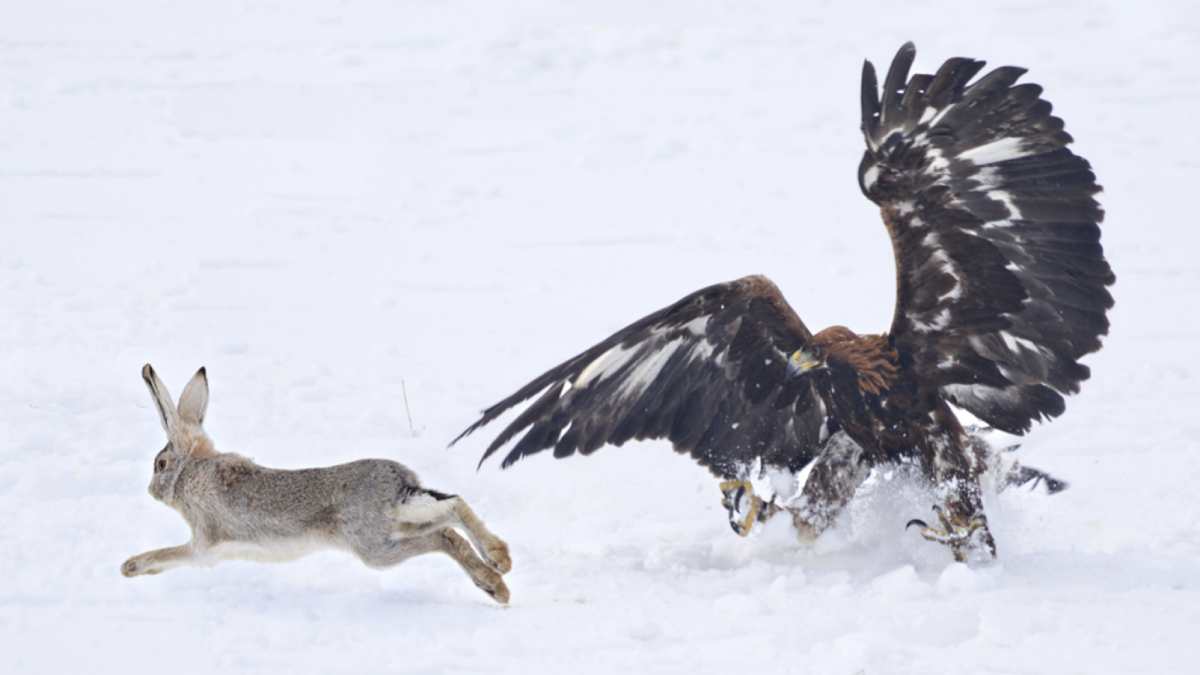If you’ve ever looked at a hawk and marvelled over its majesty and beauty, you might have also wondered “how do hawks hunt?” Hawks are amazingly fast and very agile hunters, with a myriad of different hunting techniques. Often, they dive down at prey from above, however, they also include hunting in the air, hunting in packs, flying low, perching and hover & drop.
Hawks hunting techniques
Hawks generally seen diving while catching and hunting their prey but they use some more techniques like hunting in packs, flying low.. Let’s discuss all of them in this article as different types of hawks have different hunting strategy.
Diving

Many hawks spend their lives high up in the sky. They can soar with minimal effort, especially hawks with large wingspans, which makes this an effective way to hunt without using up valuable energy reserves.
They have superb vision, and scan the ground below for suitable prey. When they spot something, they often glide after it at speed and drop down from above.
Hawks with large wings usually opt for this strategy, as they do not expend much energy soaring at heights.
They can be amazingly quiet, and have little difficulty getting close to prey without being noticed. The birds prefer to be higher up than their prey, so they can swoop on them with the extra speed added by gravity.
At times, the hawk will “scream” before it attacks. This is often enough to frighten the prey into running, giving away their position if the hawk has lost sight of them.
You will see this type of hunting in open country only; it does not work where visibility is poor and the hawk can’t spot its prey or drop on it from above.
Hunting In The Air
Some hawks prefer to go after their prey in the air, instead of dropping from above. They are amazingly nimble and extremely fast, and can dart and twist and dodge between trees with almost as much agility as the smaller birds.
Hawks that use this strategy are usually the ones with a great degree of agility in the air, such as Cooper’s hawks. They can hunt in mixed terrains like this, managing even in dense forests. The hunts are usually short and successful, although of course they aren’t always!
Obviously, this type of hunting is used to catch other birds.
Hunting In Packs
You have probably never heard of hawks hunting in packs, but at times, these amazing hunters do cooperate with each other as they hunt. Harris’s Hawks are known for this technique, and together, they can take down animals significantly bigger than they are.
They split into two groups, and one group will fly a short distance from the other and begin looking for prey.
If none is found, the second will then take up a new nearby perch. The first group then flies to a new perch, and they keep doing this until they detect prey.
They then have a choice of strategies. In one, they all converge upon the prey at once, so it is almost impossible for them to miss.
They also have a relay approach, whereby one bird will land between the prey and its chosen patch of cover. The next bit of cover is also blocked, and so on and so on, until the prey is too exhausted to keep running and can be easily killed.
If the animal they are hunting does manage to get into cover, the birds have a different technique; a few of the hawks will go in after it, driving it out to hawks waiting on the other side.
Flying Low
Similar to the first strategy, flying low involves soaring for long periods of time, but not at great height. This kind of hunting is opportunistic, and again only works in open country. The hawk depends on the element of surprise to grab its kill.
Many smaller hawks tend to opt for this strategy, such as northern harriers. However, hawks change their approach according to many different things, including the weather conditions, the prey that they are hunting, the kind of hawk they are, the landscape, and possibly even the seasons.
Perching

If a hawk finds a good vantage point from which to watch common prey areas, it will usually settle on a perch. This expends less energy than soaring above open country, and allows for a calculated, carefully planned attack. It is often used in places where trees break up open countryside and low soaring would be impossible.
You may observe hawks doing this in or near your garden if you have animals that are of interest to them – and if you want to protect those animals, you will need to prevent the hawk from doing it.
Usually, hawks will choose a tall tree on the edge of some open country where there is likely to be plenty of prey. They will settle on a high branch and simply wait until an opportunity presents itself.
Hover And Drop
Instead of diving directly onto prey, hawks may sometimes hover in the air. This is usually preceded by flying low in open spaces. When the hawk catches sight of its prey, it suddenly pauses and stays in the air by flapping its wings very quickly.
The hawk can then pounce directly at its prey, ensuring its sharp talons grab whatever it was aiming to catch.
Many hawks use this hunting strategy, but it does require them to be agile and strong fliers, as they will need to be able to hold themselves up in the air for a little while before they leap on their prey.
You can check out our post “What do Hawks eat” to know more about hawks eating habits and what they prefer to have as food.
Summary
So, how do hawks hunt? They have many different hunting strategies that they can employ, and will use them interchangeably.
Some hawks specialize more in particular strategies, but they can employ these techniques readily to suit the terrain and the animal they are hunting.


